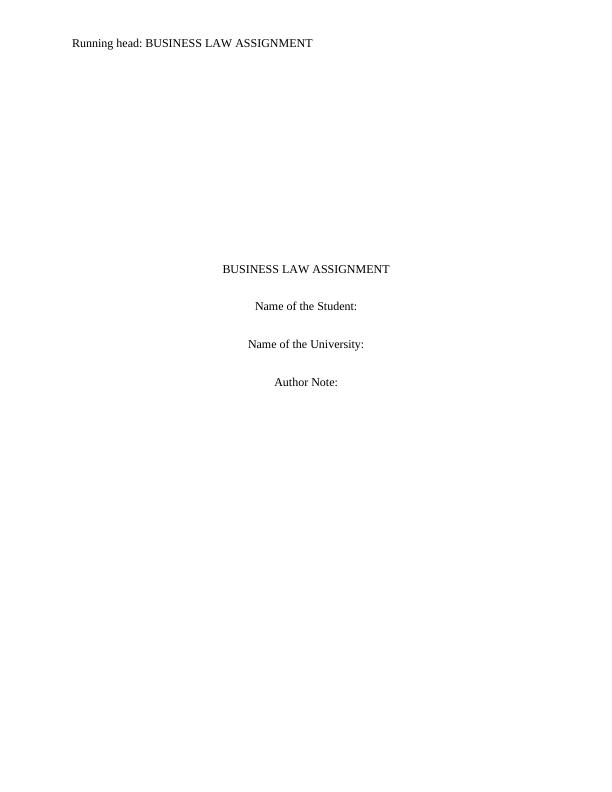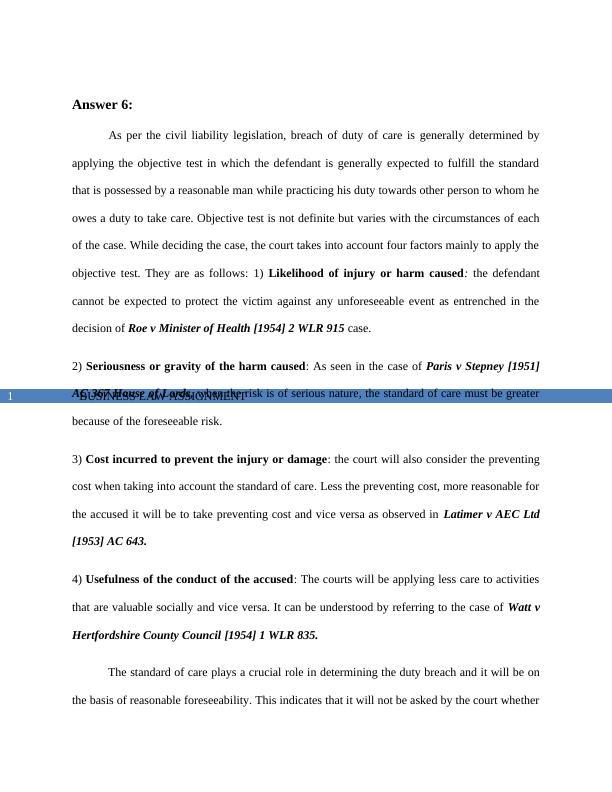Business Law Assignment
Explain how breach of duty of care is determined by the courts under civil liability legislation and the role of the standard of care in determining whether the defendant has breached their duty of care.
8 Pages1885 Words187 Views
Added on 2022-12-03
About This Document
This assignment covers topics such as breach of duty of care, causation, proposals, and restraint of trade in business law. It provides an in-depth understanding of the legal implications and includes relevant case examples.
Business Law Assignment
Explain how breach of duty of care is determined by the courts under civil liability legislation and the role of the standard of care in determining whether the defendant has breached their duty of care.
Added on 2022-12-03
ShareRelated Documents
End of preview
Want to access all the pages? Upload your documents or become a member.
Case Study Assignment
|9
|2339
|170
Business Laws Solution Assignment
|8
|1777
|56
The Assignment on Breach of Duty
|7
|1195
|11
Analysis of Negligence Liability in the Case of Cliff and Mary vs Susan
|7
|2264
|195
Suit for Negligence against Sam - Business Law Assignment
|5
|1160
|347
Business Law: Negligence and Recovery of Economic Loss
|6
|1050
|191



